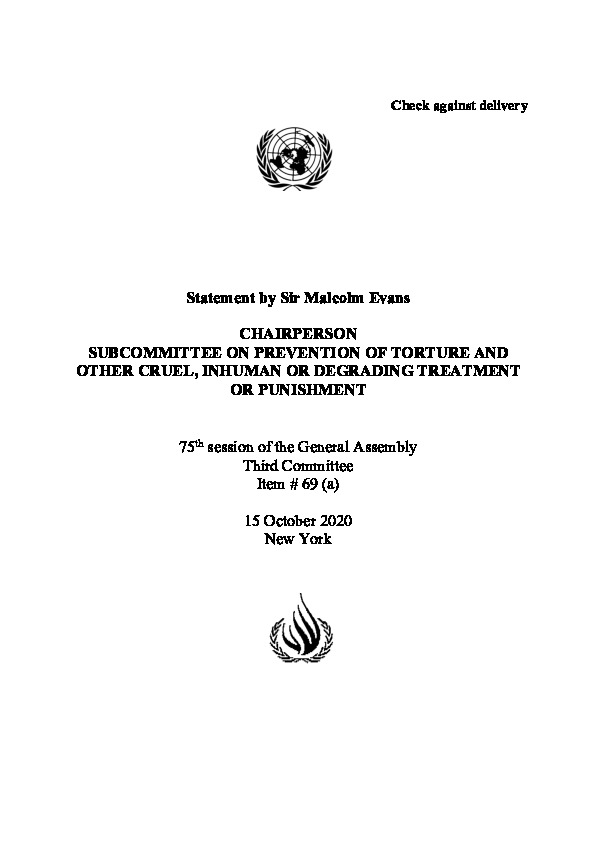Since the onset of the COVID-19 pandemic, the GDP has received increasing numbers of reports detailing the detention of non-nationals as a quarantine measure. In Bangladesh for example, more than 300 Rohingya refugees have been confined in prison-like facilities on the remote island of Bhasan Char since April–a detention situation that has been billed by authorities as a quarantine measure. More recently, reports have highlighted the use of “quarantine ships” off the Italian coast, where hundreds are forcibly isolated upon their arrival in the country.
The need to view places of quarantine as sites of detention was recently emphasised by Sir Malcom Evans, the outgoing chairperson of the Subcommittee on Prevention of Torture (SPT). In his statement to the 75th session of the UN General Assembly, he said: “One particular issue that has arisen in some countries is whether places of quarantine are places of ‘detention’ for the purposes of the OPCAT. Let me take this opportunity to answer this clearly: they are, and access cannot be denied to them.”
Previously, in its Deliberation No.11, the Working Group on Arbitrary Detention also stated that mandatory quarantine facilities established in response to COVID-19 are de facto forms of deprivation of liberty. As such, “When placing individuals under quarantine measures, States must ensure that such measures are not arbitrary. The time limit for placement in mandatory quarantine must be clearly specified in law and strictly adhered to in practice. … Any deprivation of liberty that has no legal basis or is not carried out in accordance with the procedure established by law is arbitrary.”



